Subject properties
RANDI2 supports five different property types, every property includes a name and a description.
The following types are available:
- Date type
- Ordinal type
- Integer number
- Floating point number
- Free text
Optional it is possible to define inclusion constraint. With this definition it is not possible to randomize a patient, if the entered value doesn't fulfil the constraint.
In addition it is possible to use the properties as strata for the randomization.
Date type (DateCriterion)
This type represent a date value in ISO format (yyyy-MM-dd). For example, it can be used for the date of informed consent, the date of birth, or other date values.In the following the definition of such a type is shown:
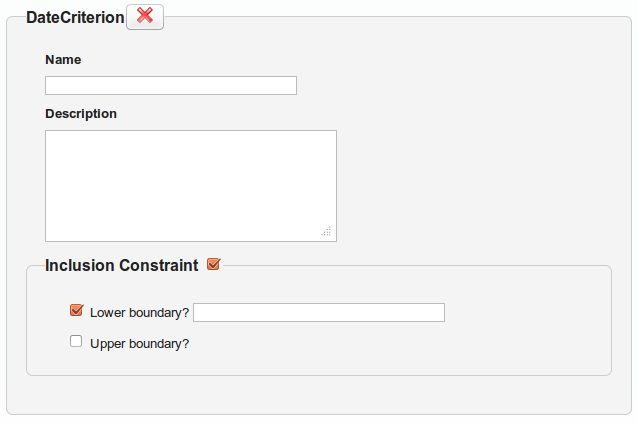
With the specification of the inclusion constraint a valid range of the date can be set. If the lower or upper boundary is not set it means that in this direction is no constraint defined.
In the following the view during the randomization is shown:

Ordinal type (OrdinalCriterion)
This type represent a select able value. For example, it can be used for the gender, or a fitness grade. It is possible to define many characteristics (e.g. male and female for gender or fitness grades from A to C).In the following the definition of such a type is shown:
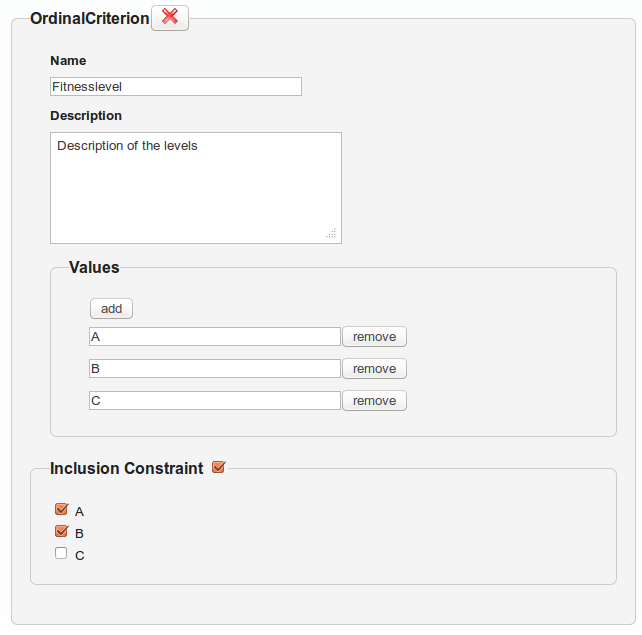
With the specification of the inclusion constraint the valid values are configured. In the example image value C is not allowed.
In the following the view during the randomization is shown (example with gender):

Integer number (IntegerCriterion)
This type represent a integer value. For example, it can be used for the age of the patient, or the year of birth.In the following the definition of such a type is shown:
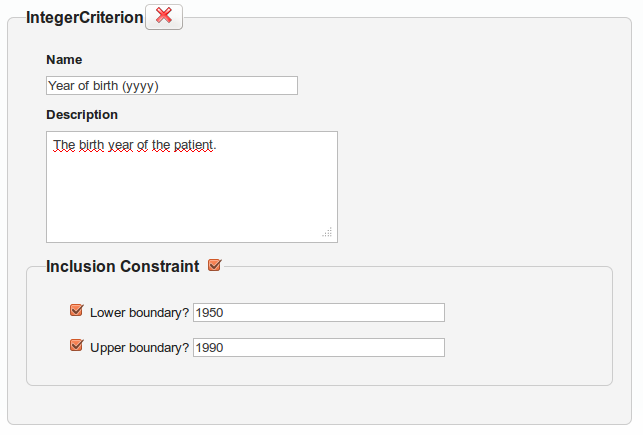
With the specification of the inclusion constraint a valid range of the integer values can be set. If the lower or upper boundary is not set it means that in this direction is no constraint defined.
In the following the view during the randomization is shown:

Floating point number (DoubleCriterion)
This type represent a floating point number. For example, it can be used for a laboratory value.In the following the definition of such a type is shown:
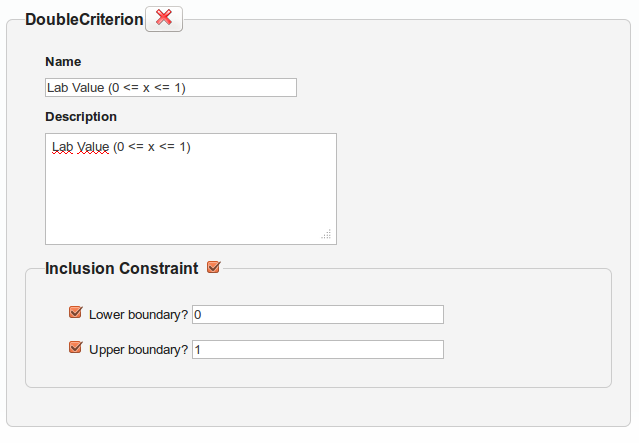
With the specification of the inclusion constraint a valid range of the double values can be set. If the lower or upper boundary is not set it means that in this direction is no constraint defined.
In the following the view during the randomization is shown:

Free text (FreeTextCriterion)
This type represent a free text value. For example, it can be used for a free text comment.In the following the definition of such a type is shown:
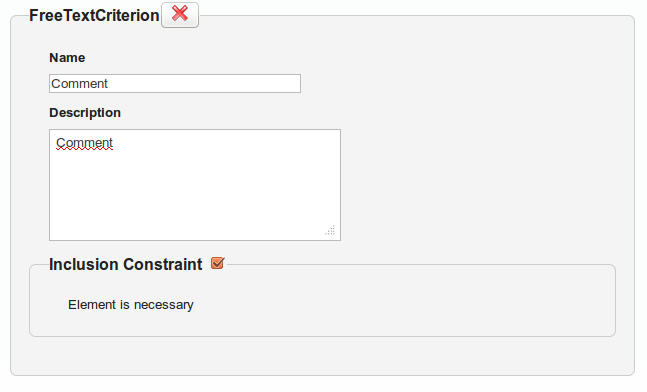
With the specification of the inclusion constraint it is necessary to enter the value during the randomization process.
In the following the view during the randomization is shown:

 - Documentation
- Documentation